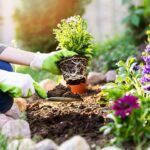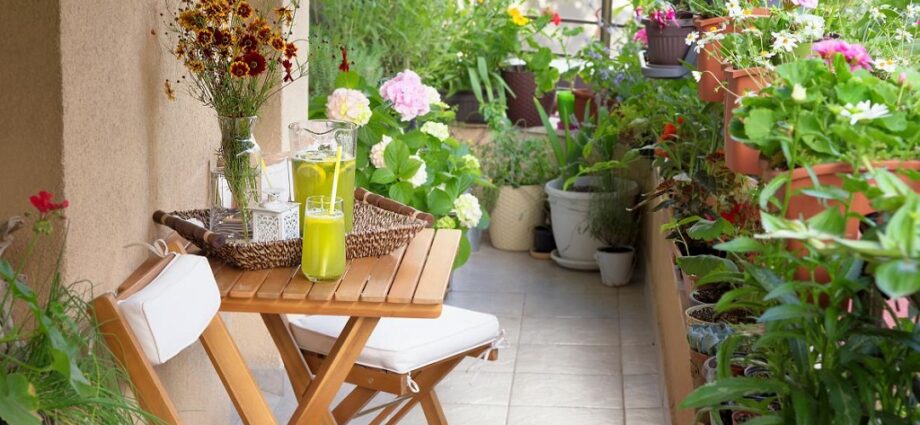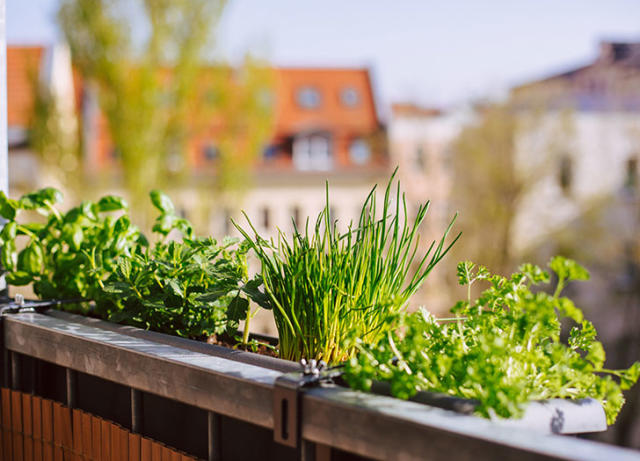Gardening is a rewarding and relaxing hobby that can easily be enjoyed even if you live in an apartment. You can grow various plants, vegetables, and herbs indoors or on your balcony or patio with a little creativity. I’ve compiled this guide to share my top 10 best plans for apartment gardening. Whether you’re a beginner or have some gardening experience, these tips will help you grow!
Best Plants for Apartment Gardening
:max_bytes(150000):strip_icc()/apartment-gardening-for-beginners-4178600-03-f76154eff240466090ed3467b5ea2407.jpg)
When choosing plants for apartment gardening, look for varieties that do well in containers and low light. Some great options include:
Succulents
Succulents like aloe vera, jade plants, and echeveria are low maintenance and require little watering. They come in a huge range of shapes, sizes, and colors.
Air Plants
Air plants like tillandsia absorb moisture from the air so they don’t even need soil. Display them in glass terrariums or let them cling to dangling pieces of wood or sea glass.
Pothos
With cascading vines and heart-shaped leaves, pothos plants are easy to care for and help purify indoor air. They tolerate low light.
Peace Lily
A superb air-purifying plant, the peace lily blooms elegant white flowers in indoor conditions. It thrives in shade and needs weekly watering.
Snake Plant
One of the toughest houseplants, the snake plant can tolerate low light and infrequent watering. Some varieties have striking yellow or white stripe markings on the leaves.
Cast Iron Plant
As its name suggests, you’d have to really neglect the cast iron plant to kill it. It handles low light and only needs occasional watering.
Best Vegetables to Grow Indoors
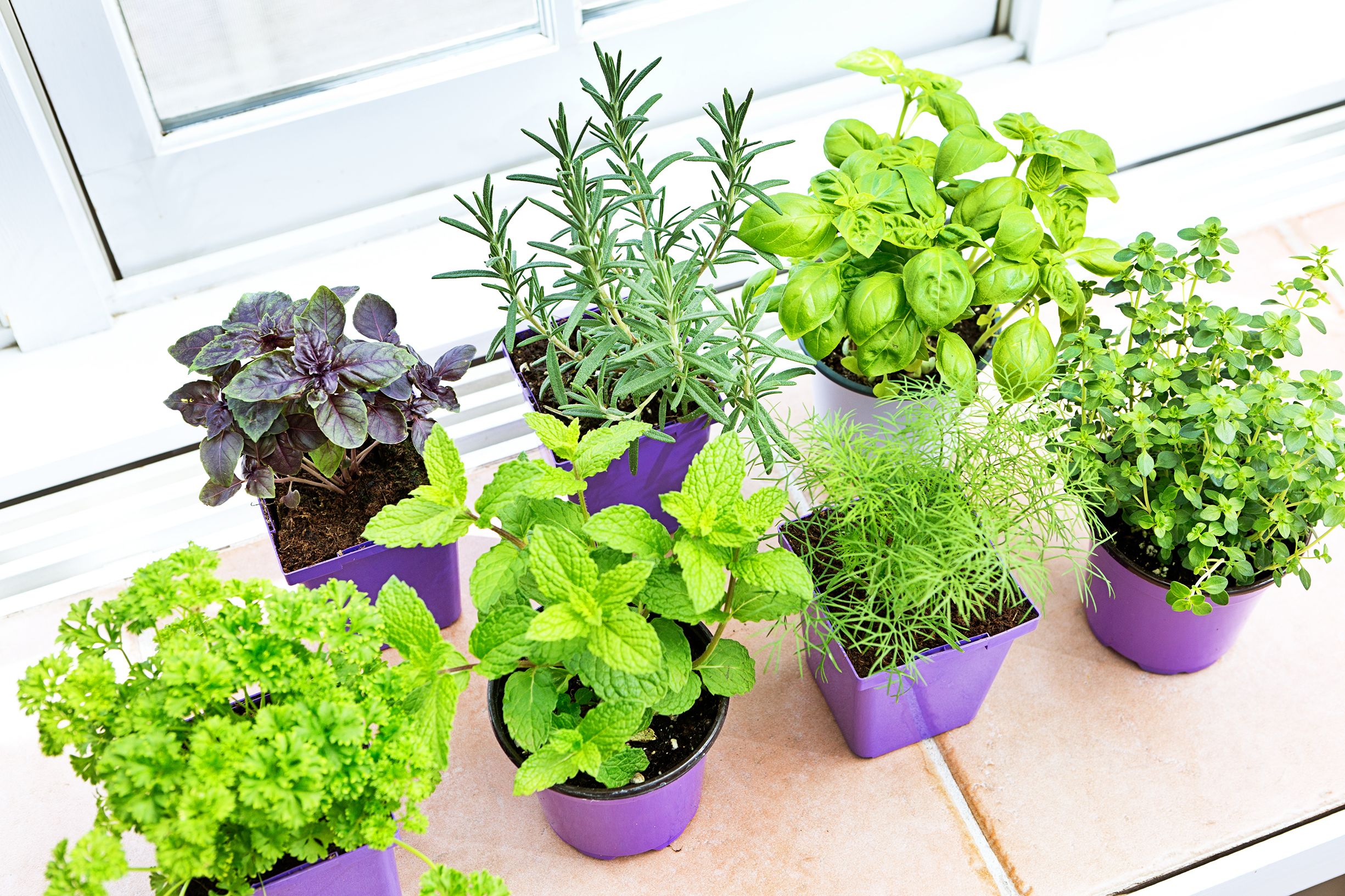
Many vegetables that grow on vines or bushes can be grown indoors in containers. Focus on plants that don’t require a ton of vertical space. Some top choices include:
Cherry Tomatoes
Cherry tomato plants stay compact enough to thrive on a sunny windowsill or under a grow light. You can expect harvests of sweet, juicy tomatoes within a couple of months.
Salad Greens
Fast-growing salad greens like lettuce, spinach, kale, and arugula can be cut again and again for fresh salads. Use a wide planter or hanging basket to maximize space.
Radishes
Radishes are a quick, easy, and delicious vegetable to grow indoors. Look for varieties that mature in 25-30 days. Plant seeds every couple of weeks for continual harvests.
Green Onions
Also called bunching onions or scallions, green onions will regrow if you keep the white bases intact when harvesting. They add great flavor to dishes.
Carrots
Opt for short, round variety carrots like ‘Amsterdam Forcing’ or ‘Parisienne’ for container growing. They’ll mature in around 50-60 days.
Bush Beans
Compact bush beans like ‘Maxibel’ only grow 12-15 inches tall, so they’re perfect for planters and hanging baskets. Keep them well-watered.
Best Herbs for Indoor Gardens
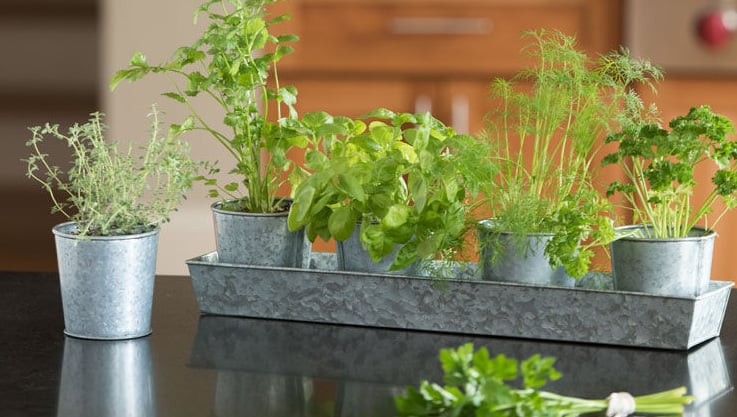
Herbs are some of the most rewarding plants to grow inside. You’ll have fresh seasoning right at your fingertips. Some top choices include:
Basil
Nothing beats the flavor of freshly picked basil. Grow this essential Italian herb in a sunny spot and keep pinching off leaves to encourage bushy growth.
Mint
Spearmint, peppermint, and other mints are invasive in outdoor gardens but well-suited to containers. Regular harvesting keeps them under control.
Chives
Both the leaves and edible flowers of chives add a light oniony flavor to dishes. Chives thrive indoors near a sunny window and spread rapidly.
Cilantro
Cilantro bolts and goes to seed quickly outdoors, but lasts longer when grown as an indoor herb. Routinely snip leaves to prolong harvesting.
Rosemary
Fragrant rosemary does well in a pot indoors. As an evergreen herb, it keeps its needle-like leaves year-round. Provide good drainage.
Thyme
A versatile herb for cooking, decorative thyme varieties add beauty as indoor plants. Prune plants after flowering to encourage new growth.
Choosing the Right Container

Almost any vessel can be turned into a planting container for your apartment garden. Focus on containers with these features:
- Drainage holes – Essential for healthy plant roots and to prevent overwatering.
- Adequate depth – Minimum of 6 inches deep for vegetables and trailing plants. Shallow pots work for petite herbs and succulents.
- Sturdy material – Avoid fragile containers prone to cracking and breaking. Terra cotta, plastic, concrete, and wood planters are good options.
- Appropriate size – Ensure the container is large enough for the plant’s root system but not oversized. Scale up gradually as plants grow.
- Aesthetic appeal – Choose pots and planters that fit your style and interior décor. Decorative glazed ceramics, woven baskets, and galvanized metal buckets all work beautifully.
No greenhouse? No problem! Check thrift stores and garage sales for quirky containers like old toolboxes or even kitchen bowls. Get creative!
Best Soil for Indoor Plants
Good potting soil is the key to healthy container gardens. Avoid regular garden soil, which can become compacted. Here are smart soil options:
- Potting mix – Formulated for containers, potting mix combines peat moss, vermiculite, perlite, and compost for drainage and moisture retention.
- Potting soil – Enriched with plant food, potting soil is ideal for edibles like herbs and veggies. It has the nutrients they need.
- Seed starting mix – Extremely textured, seed starting mix is meant for sprouting and baby seedlings. It’s lightweight with no large particles.
- Succulent & cactus mix – With extra perlite or sand for fast drainage, cactus, and succulent mixes prevent rot in drought-resistant plants.
- Moisture control mix – Containing water-absorbing gels, moisture control potting soils stay hydrated longer between waterings. Useful for forgetful gardeners!
Prep your containers before planting by covering the bottom with an inch layer of gravel for extra drainage. Then fill with quality potting mix suitable for the plants you’re growing.
Smart Lighting Solutions
One gardening challenge in apartments is that you often don’t get tons of strong natural light. Fortunately, you have options to supplement sun-deprived spots.
- South-facing windows – Position plants on the sunniest windowsills in your home, usually south or southwest-facing. Remove obstructions like curtains.
- Grow lights – Use adjustable LED full spectrum grow lights over areas without sufficient daylight. Timers automate the lights.
- Floor lamps – Angle the light from an ordinary floor lamp toward plants. Use LED bulbs for efficiency; choose daylight or plant spectrum bulbs.
- Reflectors – Place reflective surfaces like aluminum foil, mirrors, or white posterboard around plants to bounce more light their way.
- Sheer curtains – East-facing windows can be too hot and intense for plants. Filter the light with sheer, lightweight curtains.
Don’t worry if your apartment isn’t filled with sunny locations. With grow lights and a bit of imagination, your plants can thrive!
Smart Watering Techniques

Plants in containers need more frequent watering than garden beds, as soil dries out faster. But OVERwatering can be just as problematic. Use these tricks:
- Feel the soil – Stick a finger into the top inch of soil and water only when it’s dry. Soil should be moist, not saturated.
- Use saucers – Place pots on saucers so excess water drains off. The saucer prevents it from pooling at the bottom.
- Moisture meters – These handy devices have a probe you insert into the soil to get a readout of moisture levels from dry to wet. Takes the guesswork out!
- Self-watering pots – Planters like self-watering window boxes, hanging baskets, and pots with built-in reservoirs require less maintenance.
- Drip irrigation – Affordable mini drip systems provide direct water right to the roots on a timer. Great for busy schedules!
- Grouping plants – Group plants with the same watering needs, for instance, succulents and cacti that prefer dry soil. Makes watering simpler.
Adjust your watering schedule by season too. Plants need more hydration in hot, dry weather and less in cool winter. Pay attention to your plants; they’ll tell you when they’re thirsty!
Creative Space-Saving Techniques
One fun challenge of apartment gardening is maximizing every square inch. Take advantage of vertical space and compact footprints with these ideas:
- Wall-mounted planters – Install rail planters, wall-mounted pots, or shelving units to display plants out of the way.
- Tiered plant stands – Multi-layer plant stands with shelving allow more plants in a smaller surface area. Add grow lights overhead.
- Hanging baskets – Dangling baskets of orchids, succulents, trailing vines, herbs, and more utilize air space above countertops or furniture.
- Windowsill gardens – Unused windowsills are prime real estate for compact herbs, greens, and petite flowering plants in narrow planters.
- Countertop greens – Use space-saving clean culinary units that effortlessly attach right to counters for growing salad fixings indoors.
- Cabinet top gardens – Mini greenhouses and planters designed to sit on top of kitchen cabinets bring edibles and herbs front and center.
- Back-of-door hanging racks – Special over-the-door storage racks allow you to hang planters and utilize space on the back doors.
With ingenuity and flexibility, you can find plant-growing potential in every nook and cranny. Soon your apartment will be a verdant indoor oasis!
Creative Display Solutions
In small spaces, it’s important to use every bit of vertical space for displaying plants – both on walls and fixtures, tabletops, and open shelving. Get inspired with these creative apartment solutions:
- Floating corner shelves – Shelves that attach directly to walls without brackets are perfect for tucking plants in awkward corner spots.
- Mantel planters – Trailing plants like philodendrons and pothos look fabulous draped along a mantel or shelf above the fireplace.
- Bookshelf planters – Tuck small planters between books, ornamental pots along the edges, or drill shelves to hold pots.
- Ladder bookcase – Lean a classic wooden ladder against the wall to serve as an angled bookcase. The rungs can hold adorable miniature planters.
- Macrame plant hangers – Embrace the bohemian vibe by using macrame ropes or nets to hang trailing plants. Attach them to ceilings, pipes, beams, etc.
- Rail planters – Snap modular rail planters onto balcony and porch railings or mount them to interior railings and spaces above cabinets.
- Rods and hooks – Use adjustable curtain rods and S-hooks to hang plants from ceilings and pipes. Group them together at varying heights.
Searching flea markets, thrift shops, and garage sales is a fun way to hunt for unique plant stands, shelves, and display pieces. Add character by repurposing, upcycling, and getting crafty as you find clever ways to show off your plants!
Best Plants for Balconies & Patios
One major advantage of apartment gardening for living is balconies and patios! Extend your indoor space outside by filling these areas with plants. Some top picks include:
- Tomato plants – Dwarf and patio tomato varieties produce full-size fruit while staying compact enough for containers. Place in full sun.
- Peppers – Balconies get enough sun for peppers. Choose compact, ornamental varieties like ‘Pretty ‘n Sweet’ or hot habanero types.
- Leafy greens – Make the most of limited space by growing lettuce, kale, chard, spinach, and other fast-growing salad greens.
- Bush beans – Prolific producers, bush beans thrive in containers. Grow dwarf and patio types that stay under 2 feet tall.
- Strawberries – Tuck sweet alpine strawberries or ornamental calico varieties into pretty hanging planters and baskets.
- Herbs – Basil, rosemary, thyme, oregano, and many other herbs are perfect small-space herbs to grow in patio pots and window boxes.
- Petunias – Cascading and spreading petunias are gorgeous balcony flowers that bloom spring to frost in bright colors like purple, pink, red, yellow, or white.
- Marigolds – Cheerful marigolds repel pests, attract pollinators, and add vivid orange, yellow, and red hues to railings, ledges, and planters.
Vertical gardening is also useful on balconies and patios. Use vertical supports, trellises, and upright planters on walls and fences to grow vine crops like cucumbers, peas, and pole beans.
FAQs
What if my apartment doesn’t get much natural light?
The lack of sun is easily remedied with artificial lighting like LED grow lights. Use adjustable hang-from-ceiling fixtures, stands, and lamps to provide light right where your plants need it.
How do I deal with pests like gnats, mites, and aphids in my indoor garden?
The easiest organic solution is to spray plants with a mild mixture of diluted neem oil or insecticidal soap, which smothers and kills pests. Traps like yellow sticky paper also capture flying pests.
Is there anything I can grow in my dark bathroom?
Yes! Plants that tolerate low light, high humidity, and damp soil will thrive in bathrooms. Great options are orchids, ferns, peace lilies, Chinese evergreen, and philodendrons.
What food scraps can I compost indoors to use in my container gardens?
Fruit and vegetable peels, eggshells, coffee grounds and filters, tea bags, nut shells, and shredded newspaper can all be added to a countertop compost bin and turned into organic matter for plants.
How can I decorate my apartment with plants on a budget?
Check garage sales, thrift stores, discount home stores, and even the dollar store for cute and inexpensive containers. Upcycle household items into planters too. Propagate new plants from cuttings to increase your plant collection for free.
Conclusion
I hope these apartment gardening tips have inspired and given you many ideas to green up your small living space! The key is learning what plants do best indoors and in containers, providing adequate sunlight, mastering watering techniques, and taking advantage of every square inch using creative solutions. With a little practice, your apartment can become a plant-filled urban oasis. Mastering indoor gardening watering is essential to ensure your green companions thrive, turning your space into a flourishing haven. Gardening is a rewarding and enjoyable hobby, so have fun with it!










